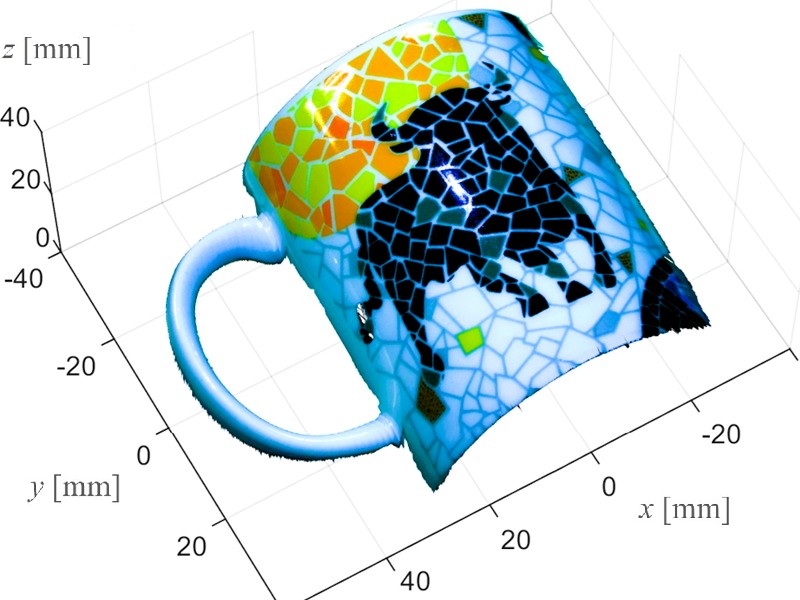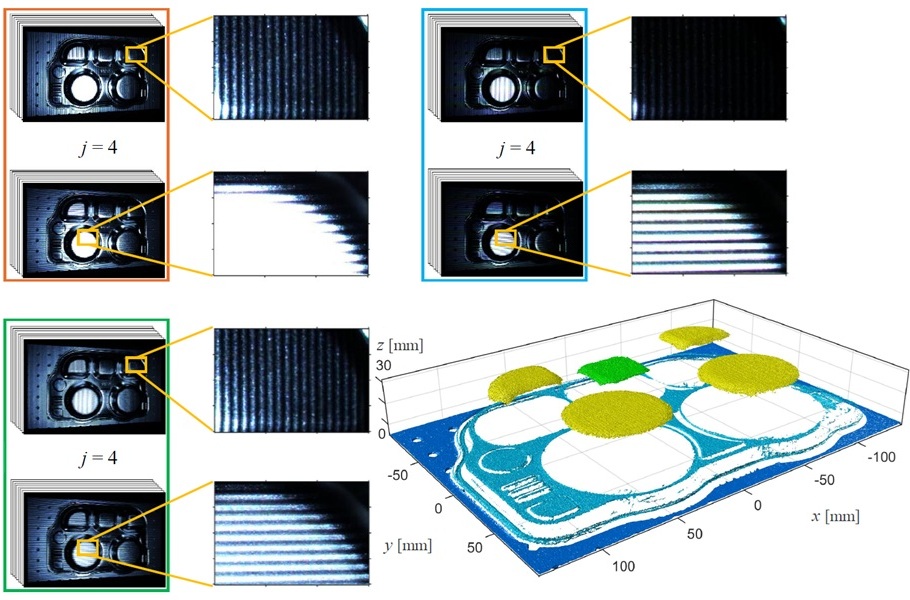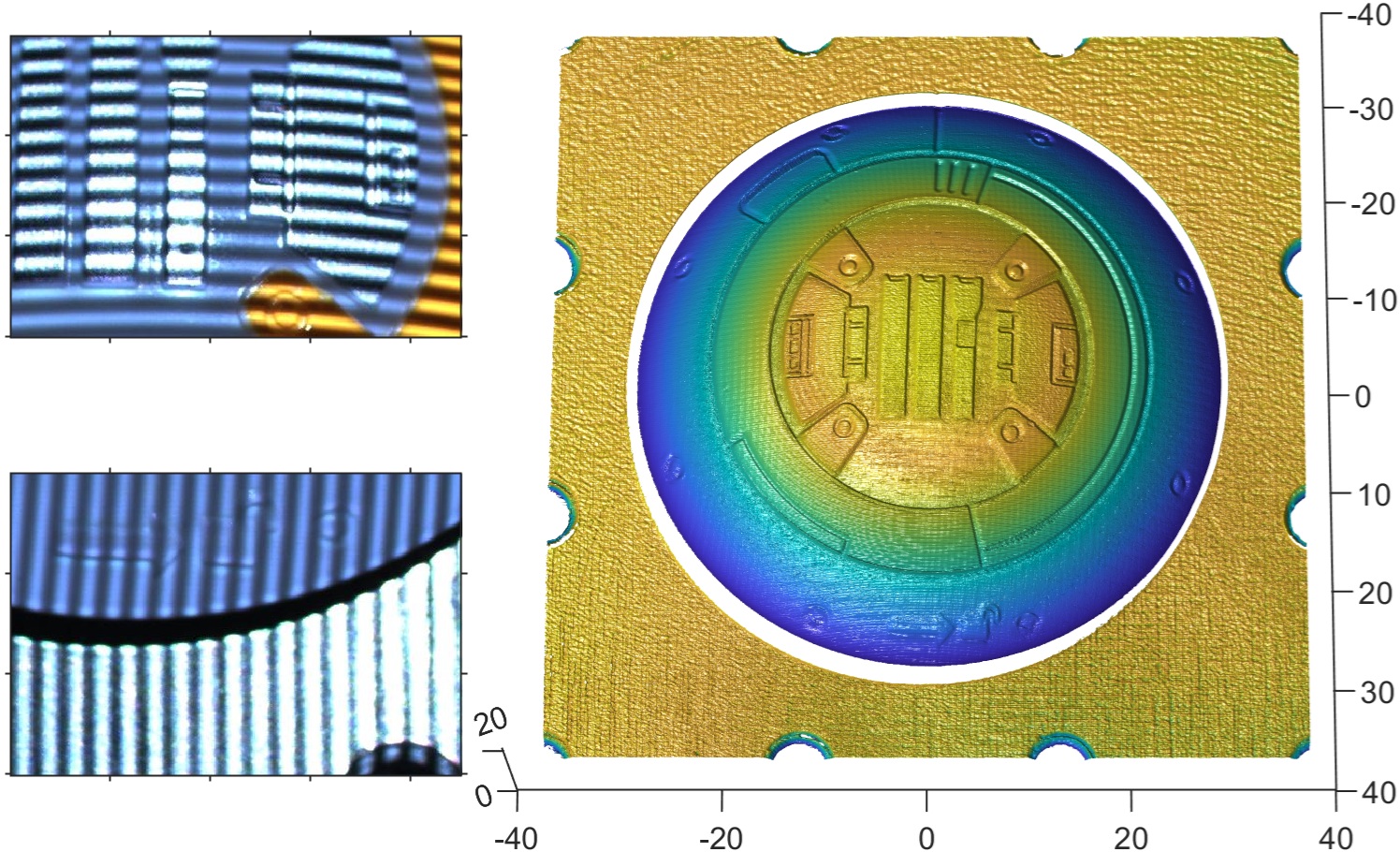
| Citation |
Rigoberto Juarez-Salazar, Fabio Vega, Sofia Esquivel-Hernandez, Victor H. Diaz-Ramirez, and Andres G. Marrugo, “Phase feedback fringe projection profilometry for shiny objects” Optics and Lasers in Engineering, Vol. 191, pp. 109013 (2025).
DOI: https://doi.org/10.1016/j.optlaseng.2025.109013 |
| Links | Full Article BibTeX More Papers |

What is it about? Español
Fringe projection profilometry effectively reconstructs 3D opaque objects but encounters challenges when dealing with shiny objects. The primary difficulty in capturing shiny objects is that they reflect light from the projector, leading to saturation of the camera sensor. In this paper, we propose an adaptive fringe projection method that dynamically adjusts the intensity of each projector pixel to avoid camera saturation. This method exploits the recursivity of the hierarchical multi-frequency fringe projection technique to modify the projector pixel intensity by a phase feedback loop. This method eliminates the need for a previous characterization of the object reflectivity.

Why is it important?
Modern applications demand optical profilometers able to reconstruct shiny objects such as glossy plastic items, coins, metallic workpieces, aeroengine blades, porcelain crockery, and dental pieces. This paper proposes a method that enhances the performance of fringe projection profilometers for reconstructing shiny objects.
Perspectives
The proposed method exploits the unexplored recursivity property of the hierarchical multi-frequency fringe projection technique. The coarse phase obtained at every frequency adjusts the projector pixel intensity for the following frequency. This approach establishes the fundamentals for further research on increasing the capabilities of fringe projection profilometry.